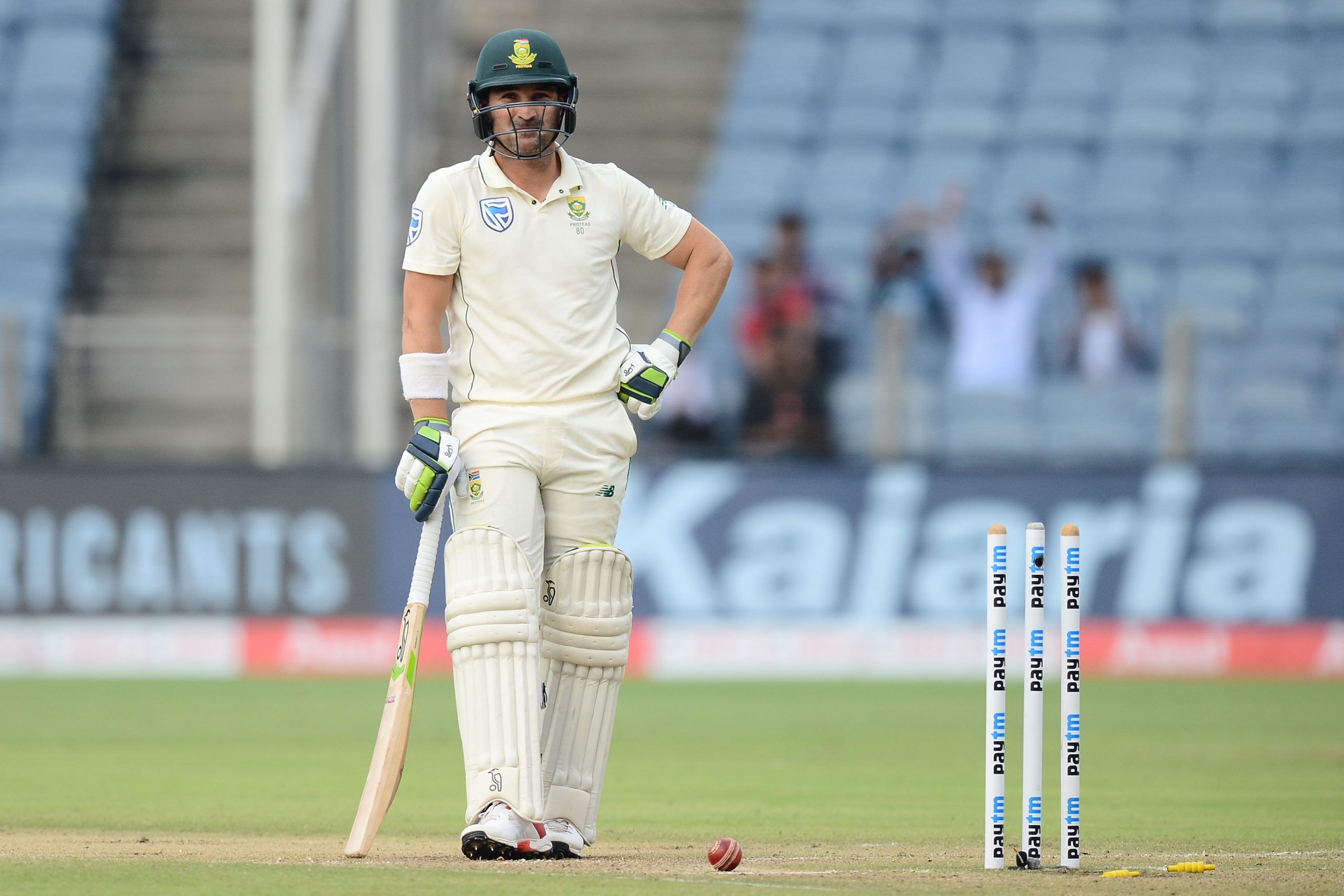Ongoing CSA woes add to the Proteas’ struggles
South Africa’s cricket governing body continues to excel at self-harm, which is affecting the senior men’s team that was crushed in India.
Author:
16 November 2019

South Africa’s recent 3-0 Test series reverse in India represented more than just humiliation on the cricket field, it may also be a harbinger for what cricket – and its followers in South Africa – will have to suffer for the next decade if the administrative chaos plaguing the sport is not arrested. Quickly.
While Team India, administered by the Board of Control for Cricket in India (BCCI), remains at the forefront of modern cricket and appears to be growing from strength to strength, cricketing and financial, South African cricket is in a state of disarray and moving swiftly in the opposite direction.
Cricket South Africa (CSA) has forecast debts of up to R654 million by 2022, with the South African Cricketers’ Association (Saca) placing the figure closer to R1 billion. The empty coffers will affect every level of the game, from development all the way to the elite performances expected of the Proteas men’s and women’s teams.
Related article:
The CSA has also failed to monetise the Mzansi Super League (MSL) to the same degree as other countries, despite Twenty20 competitions proving money-spinners from the Caribbean to India. Potential television revenue has not been optimised for the second edition of the competition, which is currently under way, and crowds so far have been anaemic. The atmosphere, funereal.
Recently, the CSA suspended three of its officials – reported to be acting director of cricket Corrie van Zyl, chief operating officer Naasei Appiah and commercial director Clive Eksteen – over the alleged non-payment of commercial rights fees, estimated to be around R2.4 million, to players for the use of their image rights in the promotion of the MSL last year.
In a piece of absurdist theatre straight out of the Albert Camus playbook, Van Zyl was nevertheless interviewed last week – along with former South African national men’s team captain Graeme Smith and former selector Hussein Manack – to be appointed permanently to the position.
CSA vs Saca
Saca chief executive Tony Irish suggested in late October that the problem relating to the non-payment of image rights went beyond Appiah, Eksteen and Van Zyl, and that the buck stopped with CSA chief executive Thabang Moroe.
“We are very surprised that Naasei Appiah, Corrie van Zyl and Clive Eksteen have been suspended in relation to allegations surrounding CSA’s non-compliance with the 2018 MSL commercial agreement,” Irish said.
“Saca didn’t deal with Appiah on this issue and in its dealings with Van Zyl and Eksteen over many months, they both expressed a strong desire to resolve the payment issue. But it eventually became clear that higher approval to do so was necessary.
“We think it’s highly unlikely that CSA’s chief executive, Thabang Moroe, would not have been aware of this ongoing issue. He was undoubtedly aware of payment obligations as he had signed the agreement.”
The matter was eventually settled, according to the CSA. But, reading between the lines of the Saca statement, it appears obvious that something is rotten in the state of South African cricket.
Legal action
Adding to the turmoil, the CSA is facing legal action after Saca resorted to the courts to obtain clarity on the governing body’s plan to increase the number of teams in domestic cricket – a move likely to dilute talent rather than strengthen the local competitions feeding into international men’s squads, according to Saca.
The CSA has also, over the past decades, proved unable to expand development into rural villages and urban townships to increase the pool of black talent available. Of South Africa’s black African Test players, only fastbowler Mfuneko Ngam, who made his debut against New Zealand in 2000, has not come from a former whites-only elite school.
In failing to democratise cricket among black communities, including those with histories that go back to the late 1800s, the CSA has been unable to harness the growing interest of the black middle class in cricket, the Test version especially, through strategic marketing to increase stadium attendance and interest among communities previously excluded from the apartheid version of the game.
Piled on top of all these failures, the blame for the series whitewash in India must lie squarely with the CSA’s administration.
Uncertainty from instability
Following former coach Otis Gibson’s exit after a woeful Cricket World Cup in June and July, for the tour of India the CSA installed a temporary team director (as opposed to what used to be the coach’s position) and a temporary director of cricket in, respectively, Enoch Nkwe and Van Zyl.
It was a stopgap situation that created further instability within the team, following the retirements of key senior players. Neither Nkwe nor Van Zyl had the time or administrative assurance to start implementing the long-term rebuilding of South Africa’s national cricket team that is so urgently required.
Related article:
That rebuilding should have started a few years ago. For, in reality, South Africa has only lost Hashim Amla recently. Dale Steyn’s career has been injury-ravaged over the past few years and he has been more out of the Test team than it.
AB de Villiers has, over the past two years, only appeared for the Proteas at the insistence of his bat sponsor during the 2018 South African summer. Ready-made replacements should have been groomed.
The Test series whitewash in India only compounded the sense of rudderless chaos felt after South Africa’s abysmal showing at the World Cup in England. The nature of South Africa’s capitulation during that tournament and then the Test series humiliation in India astonished those looking into South African cricket from the outside.
Fighting spirit?
Among the Indian pundits and ex-players who expressed frustration with the manner of the Proteas’ losses was one of the country’s greatest spinners and captain for a period, Bishan Singh Bedi: “Where is the fighting spirit that South Africa is known for?” he asked with palpable sadness during an interview in October.
“Yes, this is a young side. But South Africans, regardless of how good or bad they are, have always put up a fight,” he said, recounting the grit of Kepler Wessels, Smith and various others.
A perennial question asked by almost every Indian – from auto-rickshaw drivers to Proteas-loving shopping assistants and former national cricketers – during the October tour was how, and why, South Africa have become so bad this year?
In contrast, Indian cricket is cementing itself as the premier force in world cricket.
Cash flow
The Indian Test team has been powered by the millions of television and sponsorship dollars flowing into the BCCI which, despite various political and financial shenanigans – and there are many – has ensured money has flowed to state cricket associations for player development.
The BCCI, with former India captain Sourav Ganguly elected recently as its president, appears to be looking to entrench its autonomy, centralise political and financial power among various leaders, and take a more hard-ass approach to getting what it believes is its right from the International Cricket Council (ICC). This contrary to the Lodha Commission of Inquiry’s recommendations for cricket, sanctioned by the country’s Supreme Court.
Related article:
Among the issues its members will vote on in early December is a rejection of the notion that the Supreme Court must approve constitutional changes that the BCCI decides on, and an increase of the powers of the BCCI secretary (currently Jay Shah, the son of the country’s home minister, Amit Shah), including heading the BCCI’s apex council.
Ganguly is adamant that India deserves more than its current share of the television revenue from the ICC. He came out strongly for prioritising the BCCI getting what it “deserved” from the ICC coffers after his election on 23 October. When he officially filed his nomination for the position, he told reporters: “India generates 75% to 80% of global [television] revenue, so that’s going to be on top of the agenda. Talks and discussions need to happen as this is not going anywhere.”
Share of the pie
If India gets more money, its means a smaller share for countries like South Africa, which has already been wracked by financial and legal issues.
On a cricketing level, the BCCI has also been lauded for ensuring India’s A team tours often, preparing the next generation of cricketers to acclimatise to foreign conditions and sharpen their skills long before they make their Test debuts. That India, who played four spinners in their attack in decades past, now have one of the most fearsome fast bowling units in the world, in addition to their traditional spin strength, is testimony to the work being done to ensure the successful future of Test cricket in India.
This juggernaut will only get more fearsome and gargantuan in the next decade.
In contrast, South African cricket is in crisis. Why the transition of South Africa’s national cricket team has been mishandled to such a calamitous degree is a question that the men purporting to run cricket (into the ground?) in South Africa must answer.
Likewise, answers are required as to how it has failed to market and monetise the game, especially the shorter versions that have proved money-spinners elsewhere. These questions become increasingly urgent as a dominant India, an England buoyant after their World Cup win and the heroics of the Ashes, and a resurgent Australia threaten to leave South Africa gagging on their exhaust fumes.



